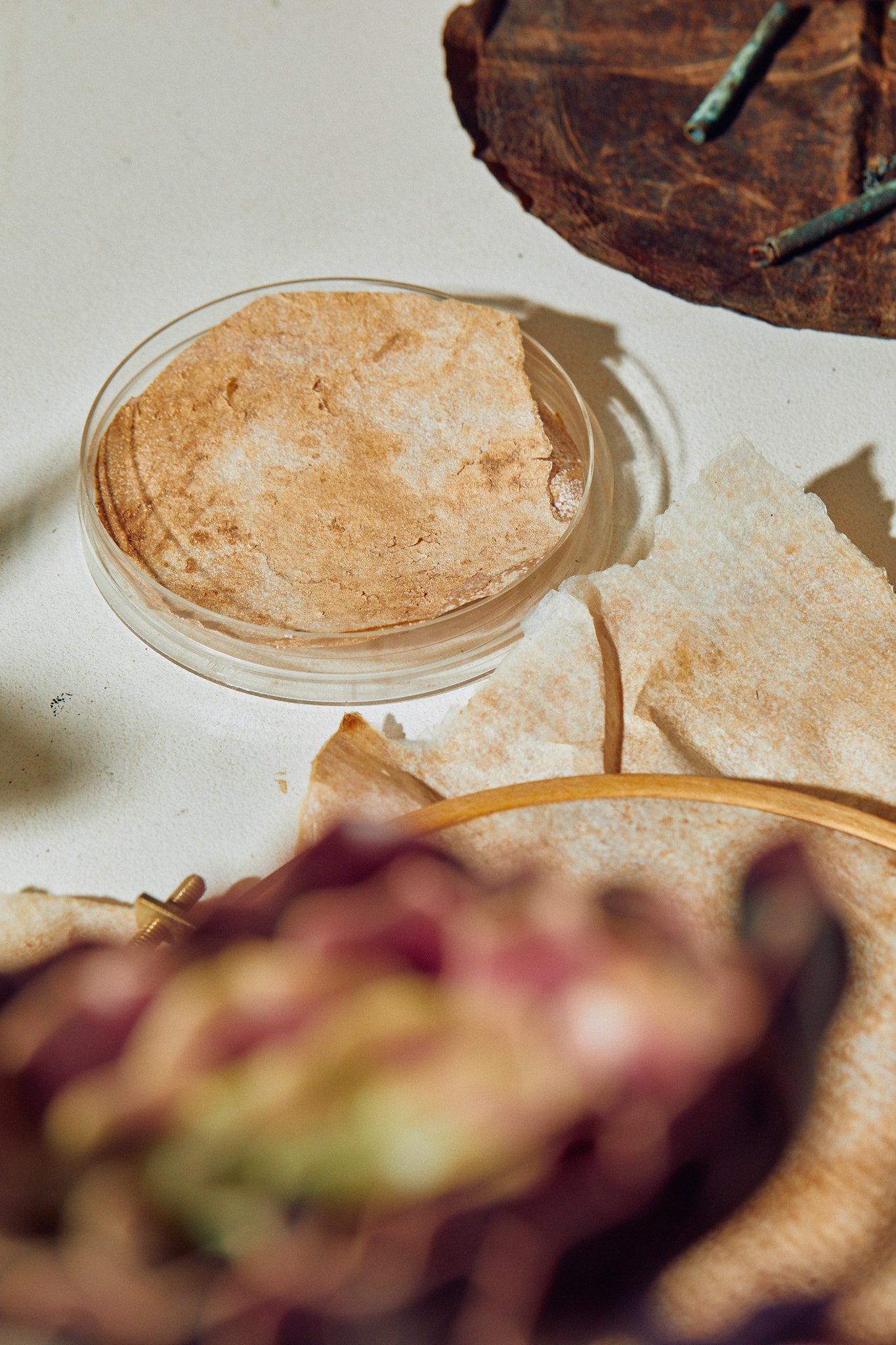
Craft Conversations
After more than 2 decades in the fashion industry and with a growing frustration in the lack of sustainable textiles available, fashion and textile designer Alexi Freeman sought to research and develop a more conscious textile alternative. His BioTextiles proposes fermentation as a method to transform nutrient rich food waste into textile materials with design applications.
What drew you to BioTextile research?
Having practiced as a fashion and textile designer for more than two decades, I’ve become increasingly frustrated by the lack of environmentally sustainable textiles available to fabricate my design products. This frustration led to a hiatus from industry practice to undertake a (recently completed) research-led masters degree, enabling a deeper comprehension of the environmental impacts of the fibre, fashion and textile industries. Through this research journey, I began working with bacterial cellulose (BC) to determine if BC biofabrication methods can be optimised to make fit for purpose biomaterials with a mitigation of environmental impacts.
What is the significance of working with this material?
Historically, humans have obtained textiles from terrestrial plants, animals, minerals and petrochemicals. In recent years, it has become increasingly apparent that fibres can also be obtained from non-traditional sources including cellulosic fibres from hydrospheric plants such as algae, protein fibres from mycelium and cellulosic secretions from microorganisms. For Alternative Provisions I’ve worked with the microbial secretions of Komagataeibacter xylinus (a microbial species) which has opened the potential to utilise bioregional waste (e.g. vegetable food waste) as feedstock for the production of biomaterials. It has been truly fascinating exploring the potential of these nanofibrillar three-dimensional matrices (i.e. non-woven textiles created by microorganisms) as eco-alternatives to the incumbent sources of the aforementioned fibres.
There are myriad challenges that remain to transform BC from a speculative biomaterial of the future, to a green material of today. Nevertheless, there is an emergent community of interdisciplinary biodesign practitioners with whom I share confidence that continued biomaterial research may bring textiles into a circular and ecologically sustainable economy.
Why do you think we need to reflect and reevaluate our approach to material in craft and design practice?
Since the dawn of the first industrial revolution, our species has become increasingly disconnected from the biorhythms of nature, evidenced by numerous anthropocentric changes we've observed through this period including the reduction of biodiversity, deforestation and melting of polar ice caps; All important cofactors culminating in climate change. On this basis, the reimagining of design materials will be crucial in reducing the environmental impacts of the materials we produce, to mitigate their aggregated impacts on the environment.
In considering this, what do you think is the responsibility of the maker?
While a shift towards more responsible modes of engaging with material objects needs to be holistically embedded across all levels of design, use and disposal, I strongly believe design has an integral role in reducing the ecological impact of consumerism. That is, it is not only the responsibility of governments and corporations to legislate more progressive policies and for consumers to buy, use and dispose of their products more ethically. Rather, these responsibilities must be shared by the spectrum of creative practitioners seeking to design and produce material objects. The biomaterials I’ve cultivated for this exhibition speculate on how artisanal artefacts may be grown in ways that align with Earth’s natural cycles of birth, life, decay and rebirth.